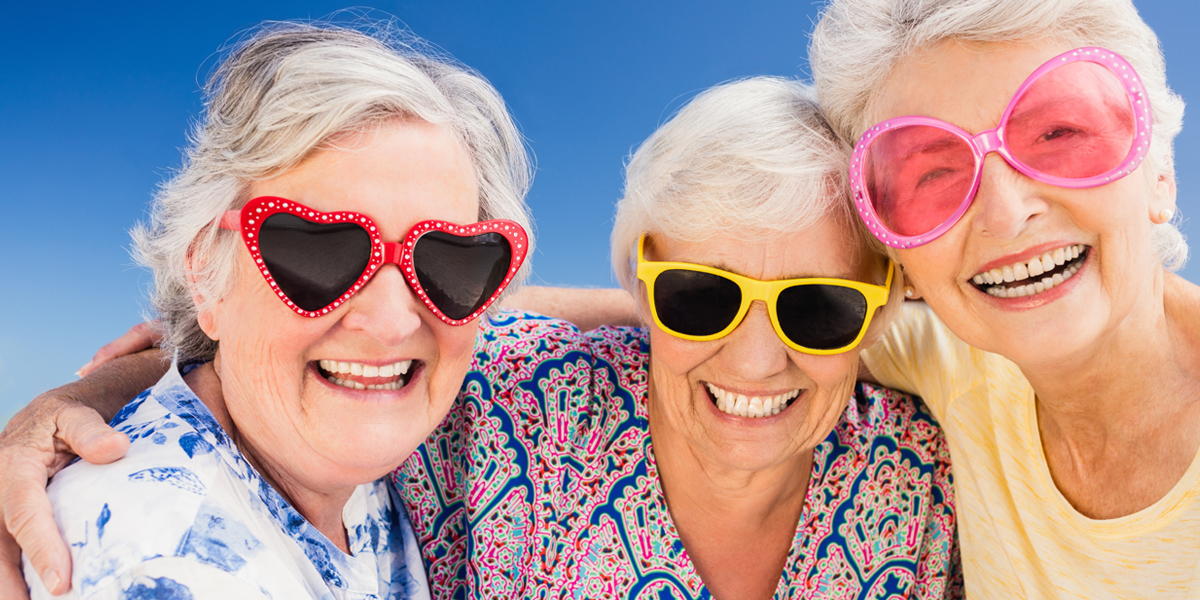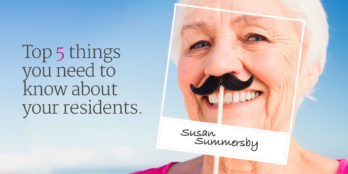
3 Summertime Activities for Senior Living Residents
 4 min
4 min
Whether it’s embracing intergenerational programming, showing support to a local sports team, or rolling out a fresh new dining menu, summer is ripe with opportunities for senior living communities to increase resident satisfaction and – more importantly – give residents a sense of purpose.
Meaningful activities have been found to increase quality of life and satisfaction for senior living residents, and the availability of activities have been indicated as an important factor to consumers when choosing a community. Additionally, offering activities that provide residents with a sense of purpose can help to improve the overall health of your resident population, as people with a sense of purpose have a 15% lower risk of death, compared to those who said they were more or less aimless.
Here are some of the best ways to embrace the season while increasing resident satisfaction:
1. Host a Summer Camp For Kids
Is your senior living community searching for the perfect way to foster intergenerational relationships? For inspiration, look no further than Villa Gardens, a continuing care retirement community (CCRC) operated by Front Porch in Pasadena, CA. Management at the CCRC correctly realized last year that summer is the perfect time for young visitors — and residents were very pleased with what followed.
Last summer, 19 eight- and nine-year-olds were bused to-and-from Villa Gardens two days a week to attend an intergenerational summer camp planned and hosted by Villa Gardens residents, according to Senior Housing News.
Some of the activities residents planned for the campers were educational. For example, one Villa Gardens resident, who happens to be a retired history professor from Occidental College in Los Angeles, taught the campers all about ancient Egypt. Another resident — a retired astrophysicist from the California Institute of Technology — taught the campers about the size of Planet Earth.
Other activities planned by the residents were more recreational in nature. Residents and campers regularly played lawn sports, made art projects and other crafts, sang songs, and took swimming lessons in Villa Gardens’s pool.
Activities like this can help to slow cognitive decline, making them especially beneficial to residents with dementia or other cognitive impairments. These programs are also effective in helping seniors combat feelings of isolation, increasing their feeling of purpose.
2. Engage Community Members in Supporting A Local Sports Team
Are you looking to create more community within your senior living community? Why not adopt a local sports team, or even house some of its players? That’s what Sanctuary at St. Paul’s, a CCRC in South Bend, IN, decided to do last summer — and it was a home run.
Two pitchers for the South Bend Cubs (a minor league baseball team in South Bend) moved into studio apartments at St. Paul’s and stayed for the season, free of charge.
When they were in town, the pitchers — both in their early 20s — regularly ate breakfast and lunch with St. Paul’s residents, getting to know them better every day. All the while, St. Paul’s residents had extra incentive to go to South Bend Cubs home games, which rallied them around a specific cause and helped them stay active. This also helped them feel like they were part of the world outside their community walls, contributing to an overall sense of belonging.
3. Involve Residents In Your New Dining Menu
The start of a new season is the perfect time to rethink your community’s dining options and freshen things up. Different fruits and vegetables are finally in season, and frozen treats are all the more appetizing. Your residents will appreciate a bit of variety and new flavors — and inviting residents into the kitchen to lend a hand is a great way to make them feel needed and included. Alternatively, some communities give cooking exhibitions to residents so they can watch what the chef is creating and become more involved.
Cooking also helps people experiencing dementia or Alzheimer’s disease. Even in the early, mild stage of Alzheimer’s, sufferers may lose interest in activities they once enjoyed, like cooking. Finding ways to make these once-enjoyable activities more pleasurable for a resident with Alzheimer’s can help them maintain their sense of self and purpose. And if they help make a dish that other residents enjoy, the dish can be added to your dining menu.
Following any menu changes, staff can use a nutrition management solution to track which meals are preferred by which residents. That way, your community won’t waste too much time — or food — while delivering a truly personalized experience for your residents. Additionally, a nutrition management solution can help keep track of any dietary restrictions.
By incorporating activities that provide residents with the opportunity to help others and contribute, you can help them achieve a feeling of purpose or meaning – which drives improved health and overall satisfaction.
To learn more on offering the services and activities that drive resident experience, read our blog on ancillary services.
June 22, 2017





